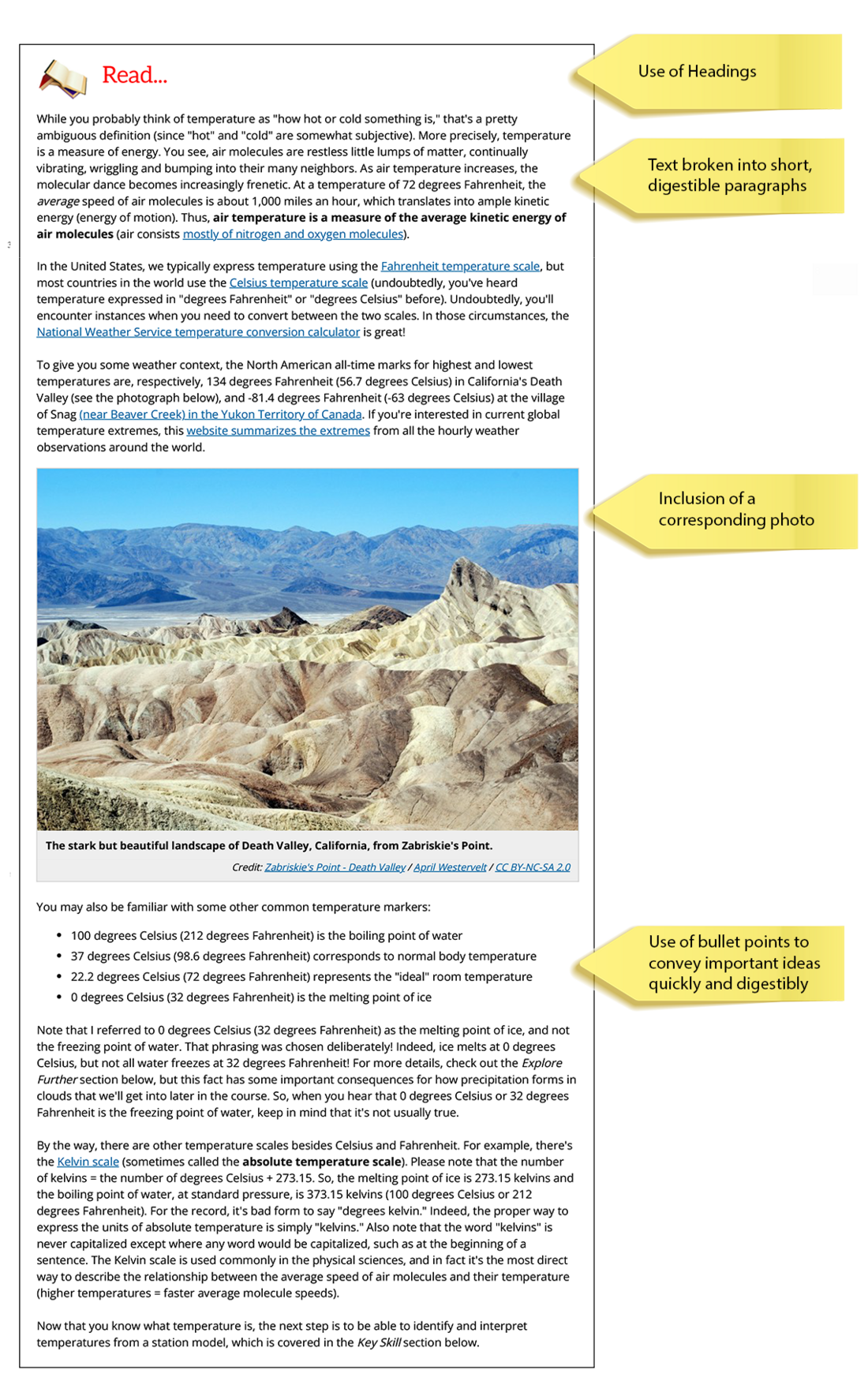Instance Description
The concept of chunking is the act of breaking course content into small, meaningful units of information that can be digested and navigated easily. The information in each chunk should be related, logical, meaningful, and organized sequentially (Shank, 2018). Research tells us that there are several reasons to chunk content when writing instructional text, including:
- To reduce the cognitive load for students, which makes material easier to take in and process.
- To promote optimal use of students’ working memory, which makes remembering and retrieving material easier.
Easy ways to put chunking to work are:
- Organizing course content into weekly modules, which helps users navigate the course.
- Dividing weekly modules into pages, files, and/or links, each of which can address a specific module topic.
- Arranging content pages with the use of headings, bullet points, images, and spacing, which helps users scan for information and engage with it without becoming overwhelmed.
Chunked material can also capture and optimize student attention, enhancing student engagement and scaffolding the learning experience. In addition, these factors contribute to a more effective and engaging online learning experience for students (Clark & Mayer, 2016).
- Chunking facilitates navigation: learners move intuitively to locate topics with ease, revisit sections, or skip to something they want.
- Chunking assists with integrating multimedia and promotes interactivity: strategic placement of interactive elements within the instruction to keep learners engaged and actively participating.
- Chunking supports self-paced learning: learners proceed at their own pace and stop at the end of a chunk instead of feeling that they must finish an entire section of content.
Image

Photo Credit
Credit: © Penn State is licensed under CC BY-NC-SA 4.0
Related Topics
References/Resources
- Shank, P. (2018, November 15). What Research Tell us about Chunking Content. Retrieved August 11, 2023, from https://elearningindustry.com/chunking-content-what-research-tells-us
- Clark, R. C., & Mayer, R. E. (2016). E-learning and the science of instruction: Proven guidelines for consumers and designers of multimedia learning (4th ed.). John Wiley & Sons.
